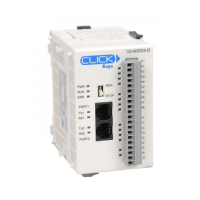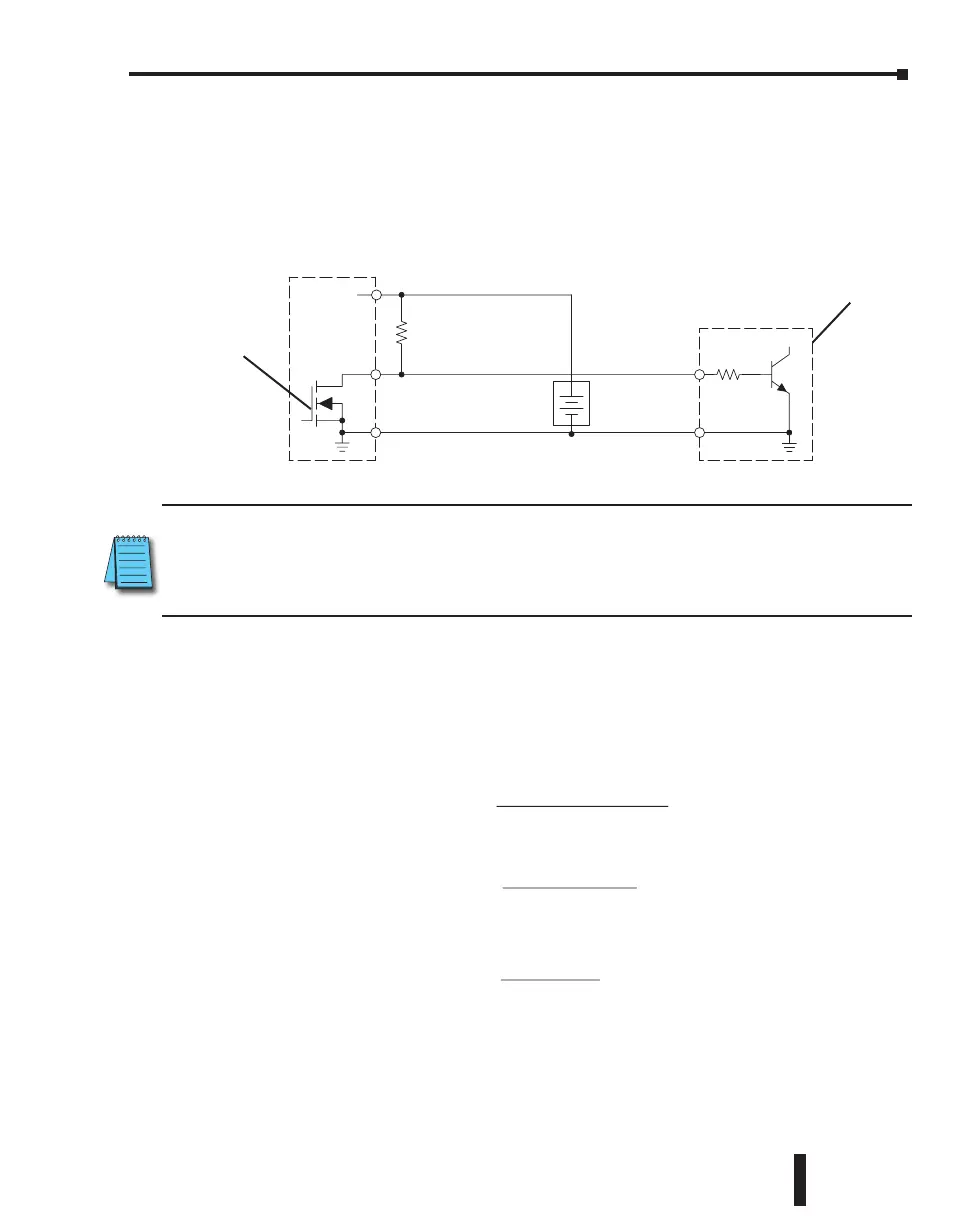PLC DC Sinking Output to Sinking Load Device
In the example below, a PLC sinking output point is connected to the sinking input of a field
device load. In this case, both the PLC output and field device input are sinking type. Since
the circuit must have one sourcing and one sinking device, we add sourcing capability to the
PLC output by using a pull-up resistor. In the circuit below, we connect Rpull-up from the
output to the DC output circuit power input.
NOTE 1: DO NOT attempt to drive a heavy load (>25 mA) with this pull-up method.
NOTE 2: Using the pull-up resistor to implement a sourcing output has the effect of inverting the output
point logic. In other words, the field device input is energized when the PLC output is OFF, from a ladder
logic point-of-view. Your ladder program must comprehend this and generate an inverted output. Or, you
may choose to cancel the effect of the inversion elsewhere, such as in the field device.
It is important to choose the correct value of R
pull-up
. In order to do so, we need to know the
nominal input current to the field device (I
input
) when the input is energized. If this value is
not known, it can be calculated as shown (a typical value is 15 mA). Then use I
input
and the
voltage of the external supply to compute R
pull-up
. Then calculate the power P
pull-up
(in watts),
in order to size R
pull-up
properly.
Field Device
Output
Ground
Input
Common
PLC DC Output
+DC pwr
+
–
(sourcing)
(sinking)
Power
(sinking)
pull-up
Supply
R
input
R
PLC Output
(Sinking with
Pull-up Resistor)
DC NPN Load
(Sinking)
pull-up
R
input
R
=
supply
V
– 0.7
–
input
I
input
I
=
input (turn–on)
input
R
pull-up
P
=
supply
V
2
CLICK PLC Hardware User Manual, 5th Edition, Rev. F – C0-USER-M
3–31
Chapter 3: Installation and Wiring

